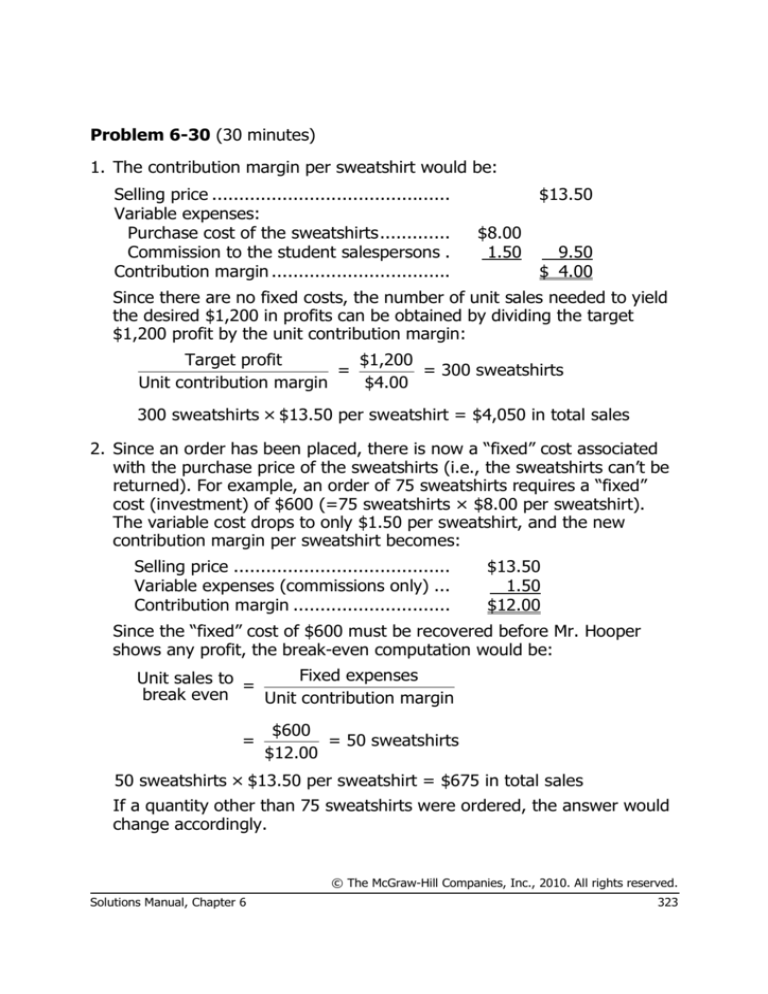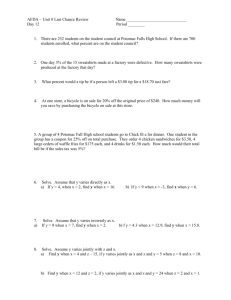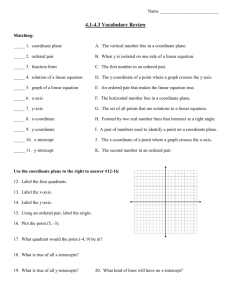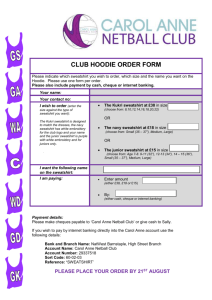
Problem 6-30 (30 minutes)
1. The contribution margin per sweatshirt would be:
Selling price ............................................
Variable expenses:
Purchase cost of the sweatshirts.............
Commission to the student salespersons .
Contribution margin .................................
$13.50
$8.00
1.50
9.50
$ 4.00
Since there are no fixed costs, the number of unit sales needed to yield
the desired $1,200 in profits can be obtained by dividing the target
$1,200 profit by the unit contribution margin:
Target profit
$1,200
=
= 300 sweatshirts
Unit contribution margin
$4.00
300 sweatshirts × $13.50 per sweatshirt = $4,050 in total sales
2. Since an order has been placed, there is now a “fixed” cost associated
with the purchase price of the sweatshirts (i.e., the sweatshirts can’t be
returned). For example, an order of 75 sweatshirts requires a “fixed”
cost (investment) of $600 (=75 sweatshirts × $8.00 per sweatshirt).
The variable cost drops to only $1.50 per sweatshirt, and the new
contribution margin per sweatshirt becomes:
Selling price ........................................
Variable expenses (commissions only) ...
Contribution margin .............................
$13.50
1.50
$12.00
Since the “fixed” cost of $600 must be recovered before Mr. Hooper
shows any profit, the break-even computation would be:
Fixed expenses
Unit sales to =
break even
Unit contribution margin
=
$600
= 50 sweatshirts
$12.00
50 sweatshirts × $13.50 per sweatshirt = $675 in total sales
If a quantity other than 75 sweatshirts were ordered, the answer would
change accordingly.
© The McGraw-Hill Companies, Inc., 2010. All rights reserved.
Solutions Manual, Chapter 6
323







